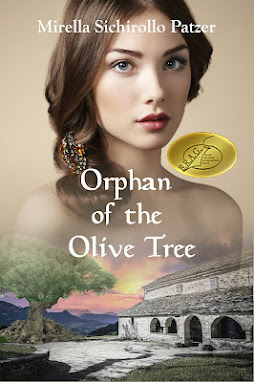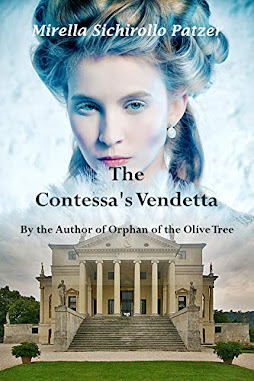Recipes
Pesto Sauce is from Genoa and the Ligurian Coast

The ancient port city of Genoa and the Ligurian Coast made an excellent backdrop for my novel, Bloodstone Castle. It is where Pesto sauce originated from.
Pasta is usually associated with Italy, even if it's cooked all around the world, in different ways. But is always leads to Italian life style.
Years ago the Italian "mammas" used to make pasta by themselves. Nowadays (things have changed) they usually buy it for everyday use in the supermarket and used to make at home ravioli, tagliatelle and some other specialties for festive occasions.
It looks like a loss, but it's not! Of course we want the "mammas" to keep the tradition, but now anyone can cook a good dish of pasta without needing to have extra time to make pasta at home. The Italian kitchen is turning more natural and easy, without losing its characteristics, allowing all of us to prepare tasty and easy dishes, as the following "pasta al pesto".
Pasta has no season, but its sauce has!
Springtime in Italy is a real "feel and smell" season, as we begin to go out often and when the weather allows, we also eat outside very often.
All these circumstances led us to recognize the season's aromas and uses. One of these main aromas it the basil one.
It is widely used in Italian cuisine, but during springtime it reaches its best, and it matches salads, tomatos' salads and also pasta sauces.
One of my favourite pasta recipe is Pasta al pesto.
The original recipe originated in Liguria (note: Liguria is an Italian region) and uses troffie, a kind of fresh pasta that you can maybe find at your market. But you can use penne (or any other pasta you prefer!) also the long ones are good, as spaghetti, bavettine and others.

What you'll need for 4 people:
• 400gr of pasta
• a hand of fresh basil leaves
• about 3 spoons of grated parmesan
• extra virgin olive oil
• 30g of pine nuts
• a piece of garlic
Put the water to boil and begin to put into your mixer, the garlic, the pine nuts, the grated Parmesan. As it mixes, add extra virgin olive oil until it becomes a cream.
When the water boils, add salt and the pasta and set your timer for the time needed for the kind of pasta you're cooking (usually it's written on the package). About 2 or 3 minutes before your pasta is done, take 2 or 3 spoons of the boiling water and add to your pesto. It helps it to become more creamer and easier to mix.
When the pasta is done, you just have to pour it through a strainer and mix your pesto with pasta. It's done! It's healthy (you have only raw and unsaturated fat), easy and tasty! Buon appetito!
Difficulty: very easy
Time needed: time needed for boiling the water and cooking the pasta (about half an hour or less).
What pesto means?
Pesto comes from the verb "pestare" that means pound on, referred to the pounder where ingredients were put inside and then pounded with a pestle.
Ana Maria da Costa Vasconcellos, economist and enogastronomic expert, lives in Italy since 1983 and shows Italian food culture from the inside, with tips and useful info in her website Italian food
Article Source: http://EzineArticles.com/?expert=Ana_Maria_Da_Costa


















Post a Comment
0 Comments